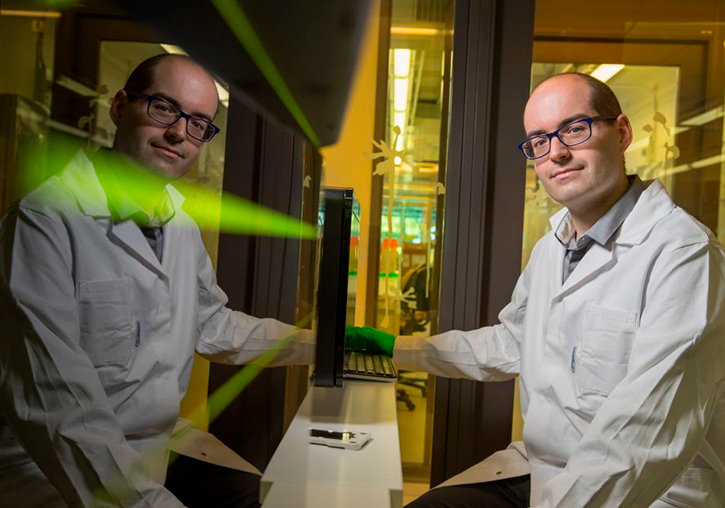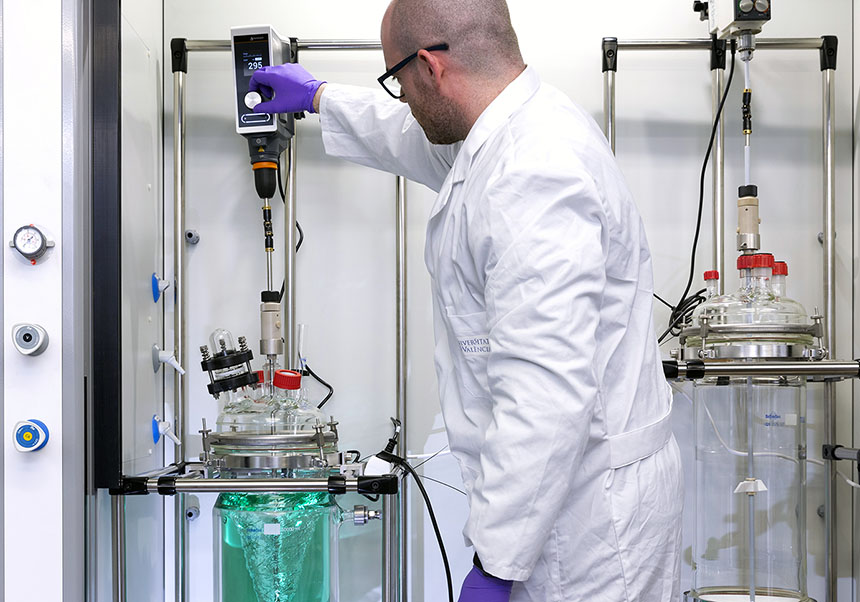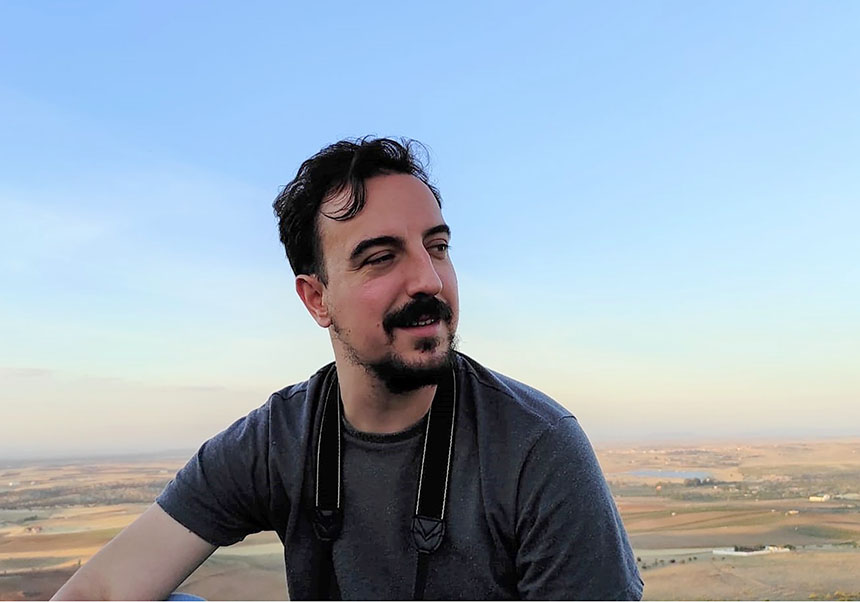Vicent Pelechano: "It's impressive how many scientists from all over the world have been involved in this pandemic"
- Mètode
- May 25th, 2020

Professor Vicent Pelechano, with a degree and a PhD in Biochemistry from the Universitat de València, has developed a simple, fast and cheap method to detect SARS-CoV-2 in patients.
This scientist from Algemesi worked at the European Molecular Biology Laboratory (EMBL) from 2009 to 2015, and since 2016 he has been an associate professor at the Karolinska Institute and a researcher at the Science for Life Laboratory (SciLifeLab) in Sweden, where he leads his own research group, the Pelechano Lab, with a staff of fifteen researchers. There, Professor Vicent Pelechano has developed a simple, fast and inexpensive method to detect SARS-CoV-2 in patients. From his Swedish office, he explains what his test consists of and what advantages it has.
How is the COVID-19 test that you have developed in your project?
In January, following the COVID-19 crisis in Wuhan, we decided, together with some Chinese colleagues, to do our bit. What we did was to use a known technology, RT Lamp, to detect very small amounts of genetic material [RNA] in the virus. It's very simple, it basically consists of mixing the virus sample with the reagents, which produces an amplification of DNA that can be detected by a change in pH, easily observed with a change in colour or by fluorescence. It is a very simple complementary method that can help in places where there is not enough capacity or they do not have other options, since it can be done basically with a pot of hot water.
"We wanted to produce a test that would help detect and isolate the affected population to reduce the spread."
What other advantages does your method have over other types of tests?
There are basically two large families of tests: those that detect genetic material, RNA, and those that detect proteins, serologies. The first, the qPCR, is used to diagnose people who have been infected very recently; the second, mainly to locate individuals who have already passed through the disease and therefore have antibodies. In our case we wanted to produce a test that would help to detect and isolate the affected population to reduce the spread of the disease. The qPCR or quantitative PCR is a method that consists of applying temperature cycles to a sample. If the virus molecule is present, it is successively duplicated so that it can be detected. Our test is a little less sensitive than qPCR and allows, by incubating at the same temperature for a certain time, a fragment of the virus to amplify and give a signal in case it is positive. The advantage is that you do not need a thermal cycler, you can do it with a very limited equipment.
It's also cheaper and faster, right?
In poor countries there are not enough thermal cyclers or qualified personnel to make qPCR. The advantage of our method is that you only need reagents, which cost one euro per sample, and put the sample at a constant temperature of 65 °C for half an hour. Actually, it could be done at home or in an emergency room, for example. In addition, since it requires very little material, it can also be a complementary tool in countries such as Spain, since with very limited resources many tests could be done in parallel, so we could do thousands of tests at the same time. This would be interesting for doing massive tests, a scenario that is being considered in the deconfinement.
Which countries have shown interest?
We have contacts with many countries. This project started with a collaboration between China and Sweden but now we are also working with partners from Germany, India, Austria, the Netherlands, Poland... exchanging protocols and information to speed up and improve the result. We also share all our information openly and advise countries with less scientific development than ours, such as some African or Latin American countries. We are doing everything we can from the academic sector. Obviously, it is a pleasure to be able to use all the training that society has put in us, to be able to give a direct application in basic research, which is what we do. And we can do it simply because we have an active research system.
"It's amazing the speed of progress thanks to global collaboration"
How has this pandemic changed the scientific method?
It's an amazing fact. Under normal conditions, in the world of research, the deadlines are longer and there are many checks before sending to review, which works very well but is slower. In this case, as the problem is urgent and cannot wait three months until we have a proper review, which is also being done in parallel, all the research groups send open information every day for the rest to read, criticise, improve and contribute to a better result. The speed of progress thanks to this global collaboration is amazing. The things we are doing now two weeks ago were not known and in two weeks much more will be known. It is impressive how many scientists from around the world have been involved in this pandemic, it is an impressive international effort.
What do you think of the controversy with the tests in Spain?
In my opinion, we have to distinguish two types of tests: those of clinical diagnosis (qPCR), which have to be very rigorous, since a clinical decision depends on them; but I think that other types of tests, like the one we have designed, can also be very useful. They may not be as sensitive, but they can help us to test the population massively because of their speed and simplicity, which can help to reduce the virus infection a lot. At this point, different strategies are being discussed to see what is more feasible in the logistical, economic or public health field. This is a complicated issue in all countries, not only in Spain.















